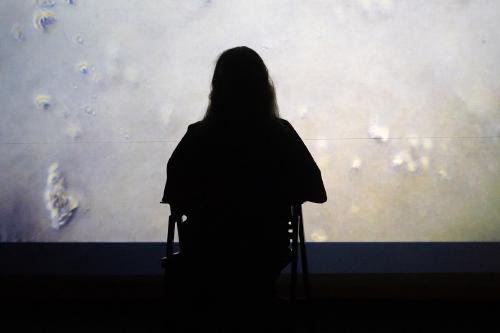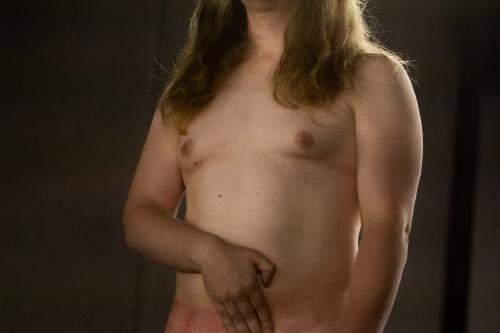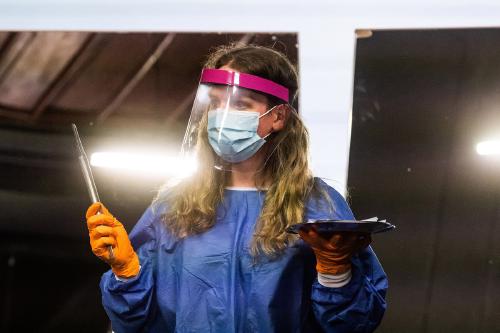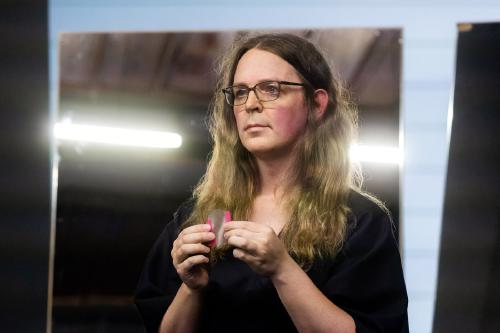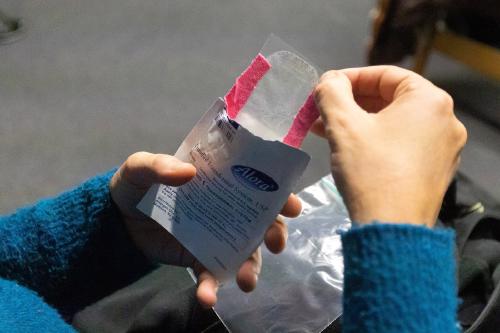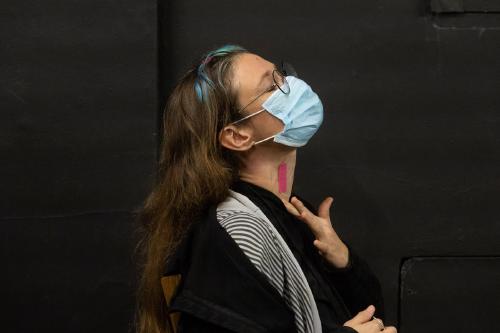Xenological Entanglements. 001a: Trying Plastic Variations (2020)
this project is part of Xenological Entanglements. 001: Eromatase
Xenological Entanglements is a multi-year project exploring the xenomogrification of the tranxxeno body. With altered scientific technologies the artist makes herself the other. In 001. Eromatase at the Kapelica Gallery/Kersnikova Institute, the artist aims to genetically engineer testicular cells (known as Leydig cells) to overproduce oestrogen within a microgravity context. Growing out of the artist’s desire to be one of the first transgender people in space, Eromatase begins to construct the necessary tools for a DIY space biology programme, including instrument construction and novel genetic engineering techniques.
Premiering at the City of Women festival, 001a: Trying Plastic Variations is a lecture performance that frames this project within previous enactments of self-experimentation with her voice, hormones, and the audacity of tranxxeno imaginaries of outer space. With vocal transmutations based on the artist’s own self-directed arduous voice training, meditations on her prior work that has orbited the Earth aboard the International Space Station, and early discoveries from the Eromatase project, the lecture-performance will enact novel constellations of the body that arise from an understanding of its malleability.
Performance text
A portion of the lecture-performance involved reading from this text I wrote about the complexities of molecular jouissance and being intoxicated by estrogen, feeling like an alien, and the potentials for transformation through ontopoiesis.
Performance Highlights Video
Credits
Dramaturgy assistance: Pia Brezavšček, Kira O’Reilly, Isabel Burr Raty
Special thanks: Špela Petrič, Meta Petrič, Simon Gmajner, Živa Brglez, Jure Sajovic, Jurij Krpan
The residency was developed as part of the Biofriction project. Production: Kapelica Gallery/Kersnikova Institute; co-production: City of Women. Special thanks: Department of Art + Design, Northeastern University. Supported by: the European Union – Creative Europe, the Ministry of Culture of the Republic of Slovenia and the Municipality of Ljubljana – Department for Culture.
